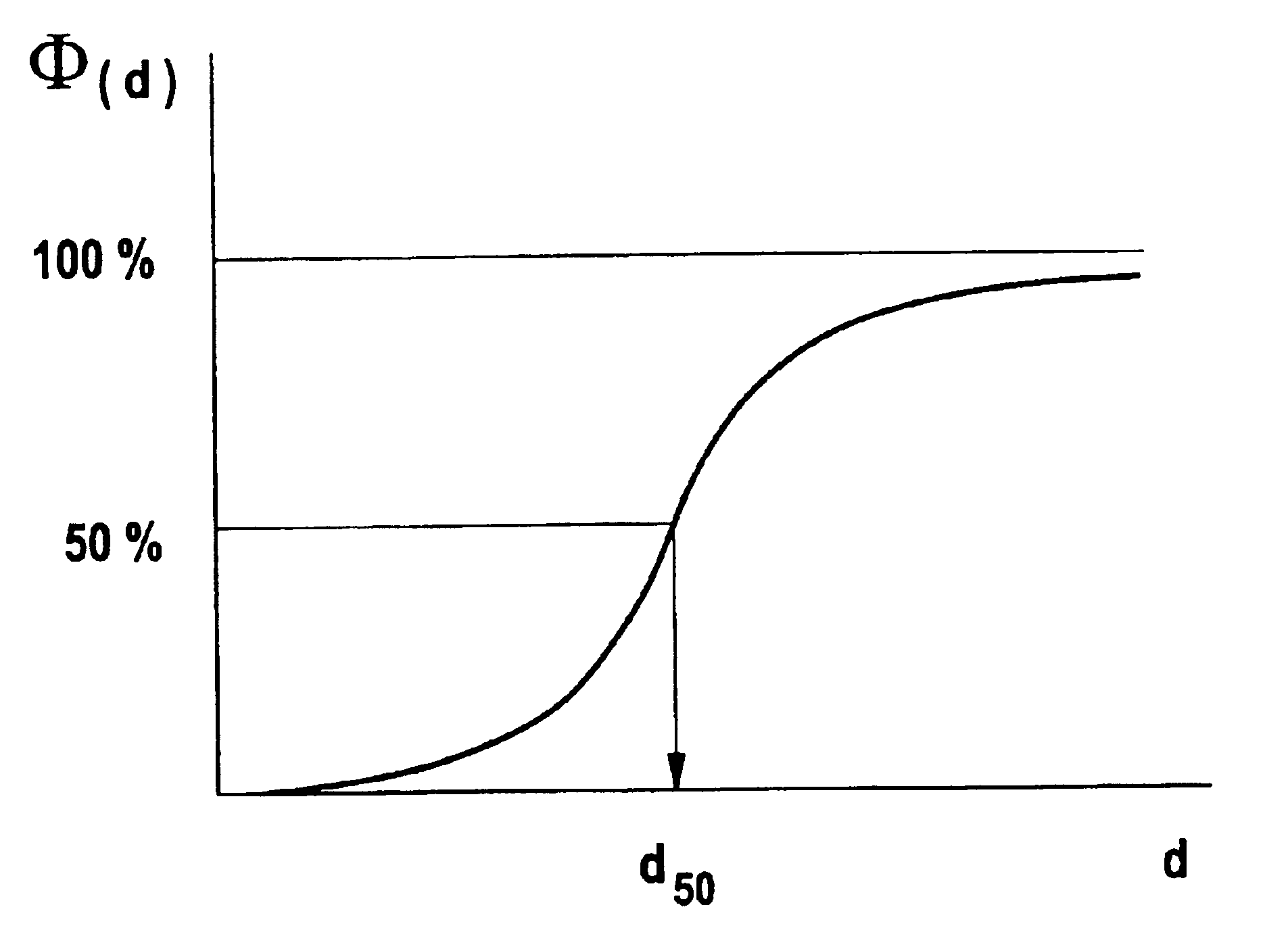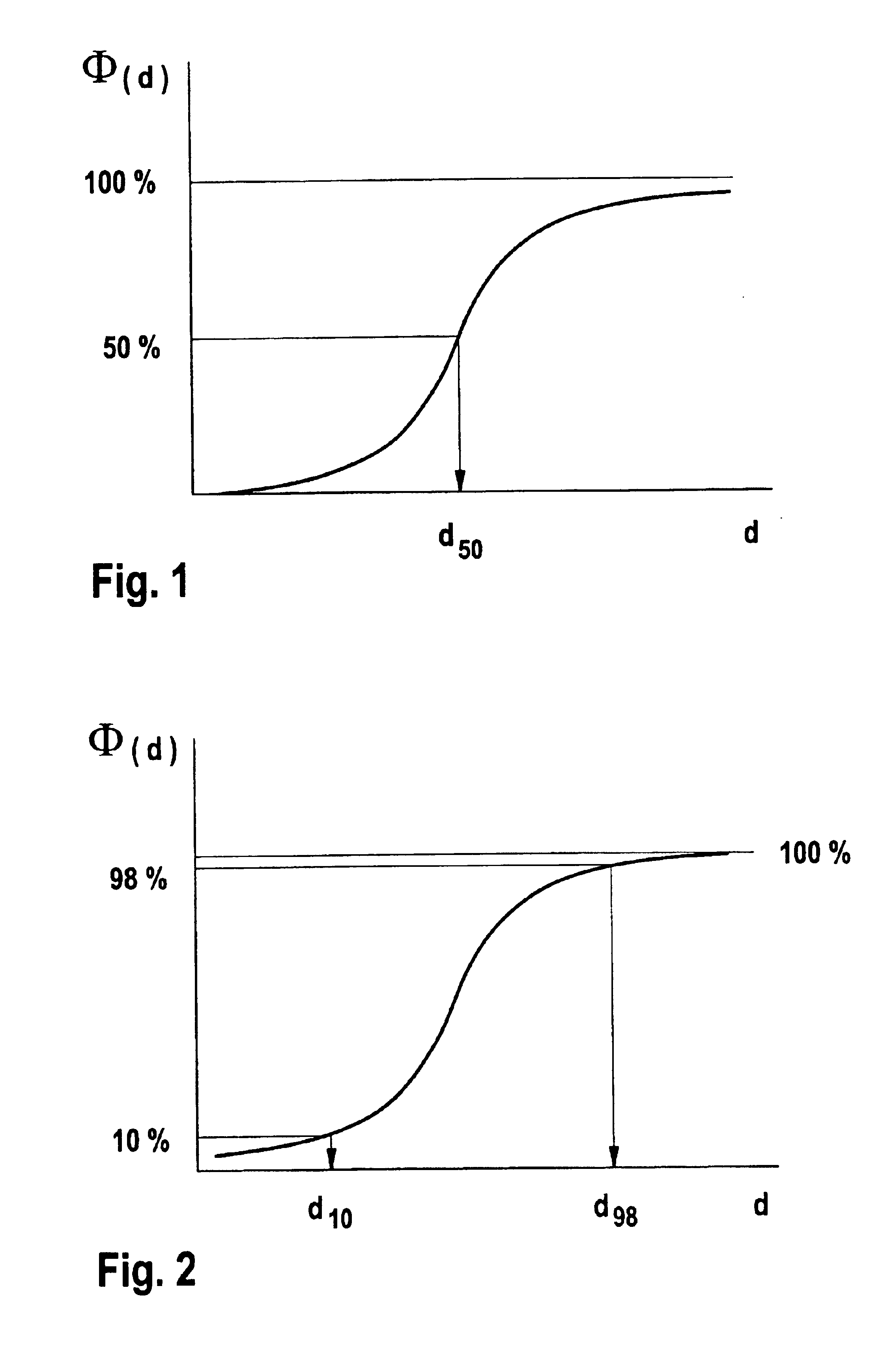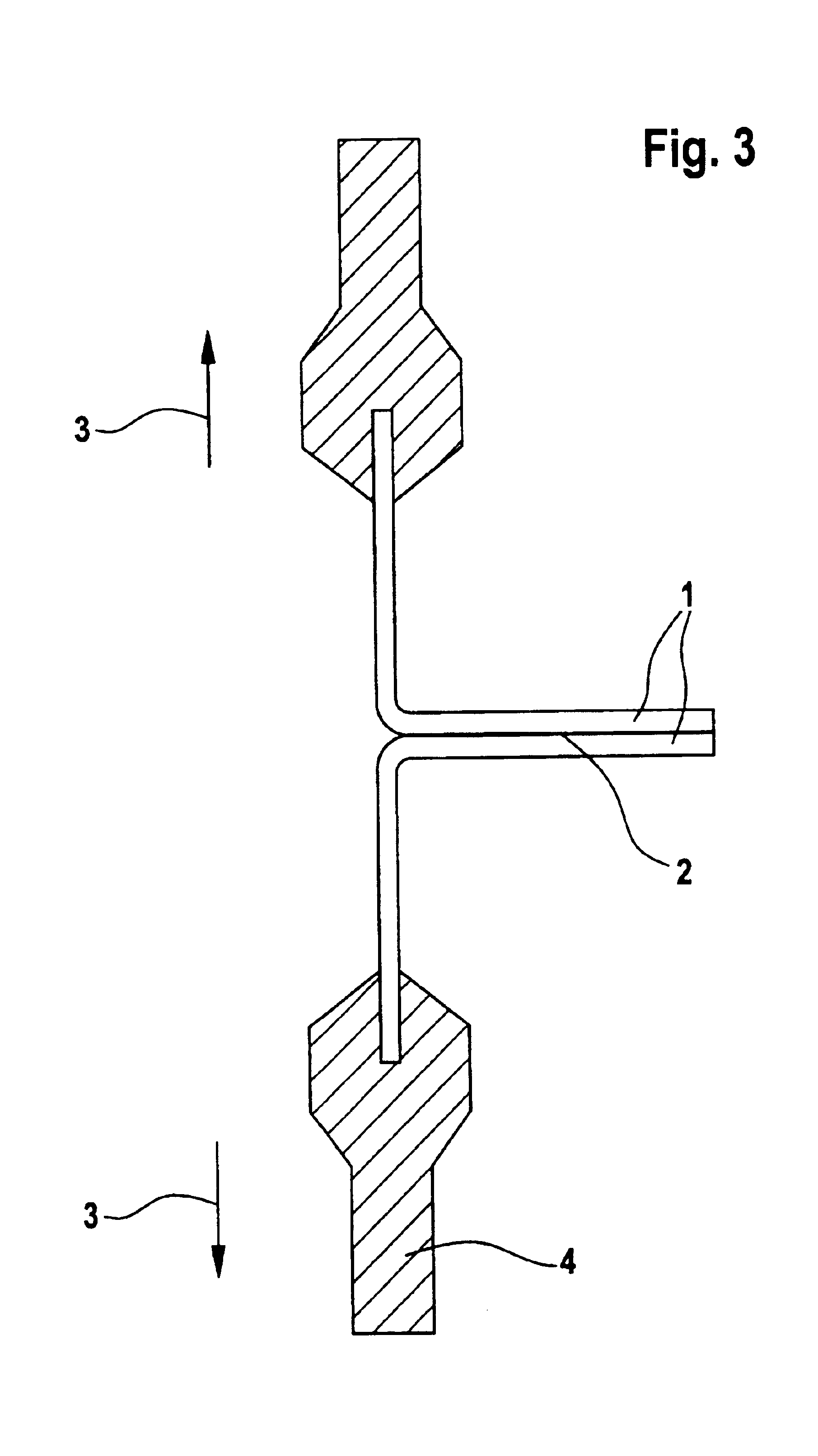Multilayer, metalized or ceramic-coated, sealable, biaxially oriented polyester film, its use, and process for its production
a polyester film, metalized or ceramic coating technology, applied in the direction of magnetic recording, magnetic material for record carriers, domestic articles, etc., can solve the problems of inability to produce films reliably, limited further processing of films, and specific information about film sealing performance, etc., to achieve excellent sealing, good handling properties, and better adhesion to the coating applied
- Summary
- Abstract
- Description
- Claims
- Application Information
AI Technical Summary
Benefits of technology
Problems solved by technology
Method used
Image
Examples
example 2
Using example 1 as the basis, the outer layer thickness for the sealable layer (A) was raised from 1.5 to 2.5 .mu.m, while the structure of the film and the method of production were otherwise identical. There was a resultant improvement in sealing properties, and in particular a marked increase in seal seam strength. The film had the required sealing properties and the desired handling properties, and the desired processing performance on systems which operate in a vacuum. The film was coated in a vacuum as in example 1.
example 3
Using example 1 as a basis, a film of thickness 20 .mu.m was now produced. The outer layer thickness for the sealable layer (A) was 3.0 .mu.m, and that for the non-sealable layer (C) was 2.0 .mu.m. Again, there was a resultant improvement in sealing properties, in particular a marked increase in seal seam strength. The film had the required sealing properties and the desired handling properties, and the desired processing performance on systems which operate in a vacuum. The film was coated in a vacuum as in example 1.
example 4
Using examples 3 as a basis, the copolymer for the sealable outer layer (A) was changed. Instead of the amorphous copolyester having 78 mol % of polyethylene terephthalate and 22 mol % of ethylene isophthalate, use was now made of an amorphous copolyester having 70 mol % of polyethylene terephthalate and 30 mol % of ethylene isophthalate. The outer layer thickness for the sealable layer (A) was again 3 .mu.m, and that for the non-sealable layer (C) was 2.0 .mu.m. There was a further improvement in sealing properties, in particular a marked improvement in seal seam strength. To achieve good handling properties and good processing performance of the film, the concentration of particles in the two outer layers was slightly raised. The film was coated in a vacuum as in example 1.
PUM
| Property | Measurement | Unit |
|---|---|---|
| median particle diameter d50 | aaaaa | aaaaa |
| roughness Ra | aaaaa | aaaaa |
| median particle diameter d50 | aaaaa | aaaaa |
Abstract
Description
Claims
Application Information
 Login to View More
Login to View More - R&D
- Intellectual Property
- Life Sciences
- Materials
- Tech Scout
- Unparalleled Data Quality
- Higher Quality Content
- 60% Fewer Hallucinations
Browse by: Latest US Patents, China's latest patents, Technical Efficacy Thesaurus, Application Domain, Technology Topic, Popular Technical Reports.
© 2025 PatSnap. All rights reserved.Legal|Privacy policy|Modern Slavery Act Transparency Statement|Sitemap|About US| Contact US: help@patsnap.com



